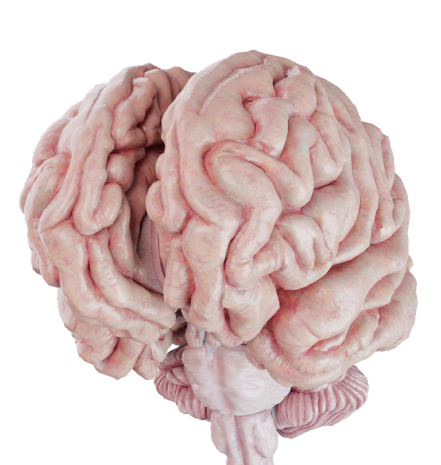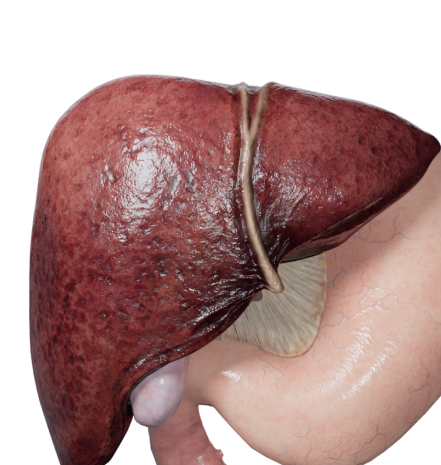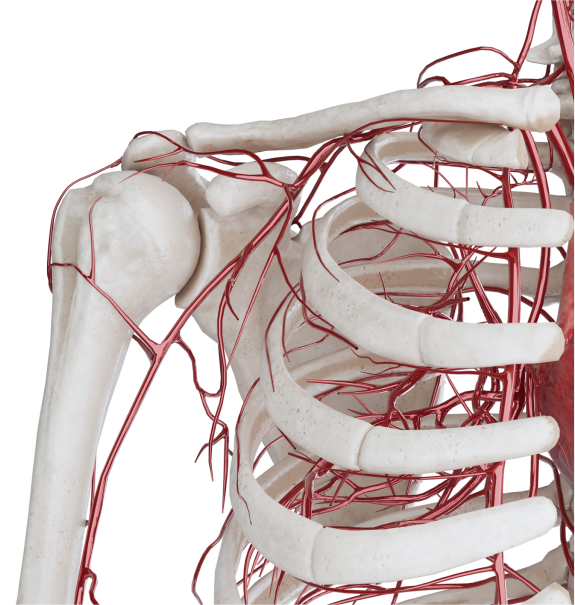Тетрада Фалло
Что такое Тетрада Фалло?
Тетрада Фалло – один из самых распространенных врожденных пороков сердца, для которого характерны обструкция выводного отдела правого желудочка, большой коновентрикулярный ДМЖП, декстрапозиция аорты и гипертрофия правого желудочка.
Эмбриология
Процесс формирования порока связан с развитием легочных артерий и разделения конотрункуса. Конотрункус разделяется спиральной перегородкой на два сосуда - аорту и легочный ствол. В зависимости от степени нарушения развития конотрункуса образуется широкий спектр пороков, одним из которых является тетрада Фалло.
Анатомия
Основными признаками тетрады Фалло являются: обструкция выводного отдела правого желудочка, дефект межжелудочковой перегородки, декстропозиция аорты и гипертрофия правого желудочка. Также часто встречаются аномалии расположения коронарных артерий.
Обструкция выводного отдела правого желудочка: обструкция создается отчасти смещенной конусной перегородкой и гипертрофированным выводным отделом. Сужение также практически всегда наблюдается на уровне клапана легочной артерии. Также возможны варианты с отсутствием клапана легочной артерии.
Дефект межжелудочковой перегородки: дефект обычно большой, смещенный кпереди, коновентрикулярный.
Декстрапозиция аорты: из-за смещения конусной перегородки, аорта смещена вправо и кпереди.
Гипертрофия правого желудочка: стенка правого желудочка увеличивается со временем, в дальнейшем может наблюдаться фиброз и диастолическая дисфункция.
Классификация
- Тетрада Фалло со стенозом легочной артерии;
- Тетрада Фалло с агенезией клапана легочной артерии;
- Тетрада Фалло с атрезией ЛА (на данный момент выделяют в отдельную группу пороков).
Гемодинамика
При тетраде Фалло имеется большой ДМЖП, вследствие чего пиковое систолическое давление в обоих желудочках одинаковое.
Направление и величина сброса на уровне дефекта зависят от степени выраженности стеноза ЛА. Поскольку давление в правом желудочке возрастает медленнее, чем в левом, в ранней систоле происходит небольшое шунтирование слева направо даже у больных с тяжелым стенозом легочной артерии. При умеренно выраженном стенозе легочной артерии отмечаются исключительно лево-правый сброс крови на уровне желудочков и объем легочного кровотока выше системного.
При более выраженном стенозе легочной артерии легочное и системное сопротивление почти равны, поэтому сброс крови двунаправленный. В случае выраженной обструкции выводного тракта правого желудочка направление сброса крови — справа налево, с обедненным легочным кровотоком. При этом легочный венозный возврат также уменьшен, и большая часть крови попадает в аорту из правого желудочка, что обусловливает низкий уровень оксигенации. Хотя степень стеноза при тетраде Фалло различная, сужение достаточно выраженное, чтобы сохранялось нормальное или несколько пониженное давление в легочной артерии.
Сердечный выброс при тетраде Фалло обычно нормальный или несколько увеличен. Локализация ДМЖП, стеноз легочной артерии и степень смещения аорты в незначительной степени влияют на гемодинамику порока. У некоторых пациентов инфундибулярное сужение имеет динамический характер, особенно при возбуждении, что объясняет частую выраженность синюшности и одышечно-цианотические приступы. Поскольку давление в правом желудочке равно системному, тяжелая гипертрофия правого желудочка отсутствует.
В покое уровень pH и рСО2 у пациентов с тетрадой Фалло не отличаются от нормы. Уровень РО2 зависит от степени СЛА. При незначительной или умеренной физической нагрузке, при проведении катетеризации сердца оксигенация артериальной крови снижается иногда до критического уровня. Это легче всего установить, проводя неинвазивную пульсоксиметрию.
Основной причиной такого резкого падения насыщения крови кислородом является снижение сопротивления системных сосудов, обусловленное психической и физической нагрузкой. Это приводит к увеличению право-левого сброса.
Насыщение крови кислородом также снижается при одышечно-цианотическом приступе, сопровождающемся метаболическим ацидозом. Приступы возникают у пациентов, имеющих мышечное динамическое, а не фиксированное фиброзом сужение. Этиология возникновения одышечно-цианотических приступов точно не известна, но предполагается, что они возникают вследствие причин, которые приводят к увеличению потребности в кислороде в сочетании с уменьшением pО2 и рН и увеличением pСО2. Это приводит к гипервентиляции, увеличению венозного возврата, увеличению право-левого шунтирования и к дальнейшему уменьшению pО2 и рН.
В результате продолжающейся гипоксии уменьшается сопротивление артериальной системы большого круга кровообращения и увеличивается сброс крови справа налево. Из-за хронической гипоксии у таких детей развивается полицитемии с частыми тромбозами.
Диагностика
- ЭхоКГ, КТ. “Золотой стандарт” в постановке диагноза.
- ЭКГ. Изменения неспецифичны. Возможно отклонение ЭОС вправо.
- Рентгенография органов грудной клетки. Можно обнаружить обедненный легочный рисунок и увеличение тени сердца.
- Катетеризация сердца и ангиокардиография. Применятся для обнаружения сопутствующих патологий или периферических стенозов легочных артерий.
Клинические проявления
Тяжесть клинической картины зависит от степени выраженности стеноза легочной артерии, который является наиболее вариабельным компонентом тетрады Фалло. У новорожденного может быть выражен цианоз, гипоксия, в то время как у ребенка подросткового возраста могут отсутствовать выраженная симптоматика. Цианоз может наблюдаться с момента рождения ребенка, либо появиться только спустя некоторое время. У некоторых детей отмечается клиническая картина большого ДМЖП с повышенным легочным кровотоком и даже с застойной сердечной недостаточностью. По мере прогрессирования стеноза ЛА у этих детей проявляется более типичная клиническая картина тетрады Фалло, исчезает застойная сердечная недостаточность и появляется слабый цианоз.
Эпизоды выраженного цианоза с нарушением дыхания и даже с потерей сознания получили название «цианотических», «гиперцианотических» или «одышечно-цианотических» приступов. Такие приступы наблюдаются чаще с 2–4 -месячного возраста. Приступы чаще возникают в утренние часы при пробуждении ребенка, после плача, кормления и дефекации и могут усиливаться при физической активности.
Ребенок становится беспокойным, продолжительно плачет, усиливается цианоз, дыхание становится частым и затрудненным.
Для больных с тетрадой Фалло характерна поза на боку с поджатыми к животу коленями. Особенно часто этот признак проявляется в раннем возрасте. В этом положении дети чувствуют себя более комфортно, так как повышается оксигенация артериальной крови. У большинства пациентов с тетрадой Фалло имеется систолический шум по левому краю грудины в средней или верхней ее трети, обусловленный стенозом ЛА.
Лечение
Терапия направлена на уменьшение гипоксемии и ее последствий, коррекцию метаболических нарушений. Для предупреждения гипоксических приступов пациентам назначают бета-адреноблокаторы. Большинство цианотических приступов купируется при помощи довольно простых медикаментозных методов, но само их появление рассматривается как показание к хирургической коррекции порока.
Хирургическое лечение показано при прогрессирующей гипоксемии и ее последствий, наличии гипоксических приступов.
Существует несколько методик коррекции: одноэтапная радикальная коррекция, двухэтапная коррекция. Также в качестве паллиативной процедуры предложено применение баллонной дилатации клапана легочной артерии.
Двухэтапная коррекция подразумевает наложение модифицированного шунта по Блелоку в качестве первой паллиативной процедуры, и радикальную коррекцию в более старшем возрасте. От данной концепции все чаще отказываются и предпочитают первичную радикальную коррекцию, при которой устраняется обструкция выводного отдела правого желудочка и выполняется закрытие дефекта межжелудочковой перегородки заплатой.







